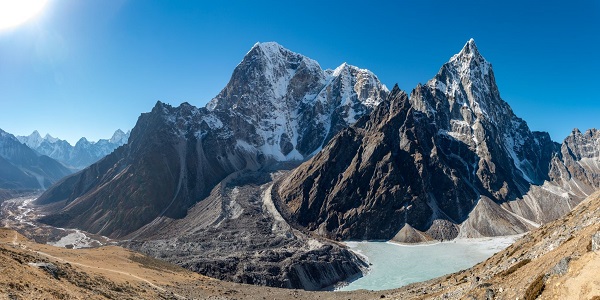Extinction of wildlife
Extinction of wildlife
The International Union For Conservation Of Nature & Climate Change Pakistan has created the red list of endangered wildlife which includes more than 50 animals that are near extinction. That has caused an alarming situation for the ecosystem and wildlife habitat of Pakistan.
Although, this is a blessed country when it comes to natural beauty, resources, and wildlife. However, due to the lack of attention and interest of our policymakers and the general population towards environmental factors. It has become the top 5th vulnerable country to climate change, wildlife extinction, and other environmental issues.
Unfortunately, the world has become an unsafe place for various wild animals due to the following factors;
- Urbanization.
- Deforestation.
- Water Pollution.
- Hunting.
Here are the top 4 wild animals that are critically endangered;
Markhor:

Despite being the national animal of Pakistan, “Markhor” is getting extinct due to excessive illegal hunting and climate change. Markhor is a large Capra Species native to central Asia, Karakorum, and the Himalayas.
Markor lives on high mountains and has an average life of 12 to 13 years. According to various reports, the Markhor has now reduced to around 2500 to 3000.
If “now” isn’t the time to save the habitat and a suitable environment to revive the Markhor population then I don’t know when is Because the major reason behind the extinction of the national animal of Pakistan is “illegal hunting”.
Although, being a responsible Pakistani citizen it is our primary responsibility to take care of our homeland and the creatures living in it. However, due to deforestation and climate changes, Pakistan is no more a suitable place for its habitat.
Markhors are herbivores and hence mainly graze on tussocks of dry grass. So they’re not a danger for other wild animals living along with them.
In this way, they play a key role in the development of peaceful and safe wildlife. Now, it’s up to humans if they can let these animals live in peace and harmony to prevent an imbalance in our ecosystem.
Himalayan Brown Bear:

The Himalayan brown bear is native to Pakistan, Afghanistan, West China, North India, and Nepal.
The Himalayan brown bear is the sister clan to brown bears and polar bears. They peacefully go into hibernation for months during winters.
Unfortunately, only 70 to 80 Himalayan Brown Bears are alive today in Pakistan.
The main reason for their endangerment is poaching and hunting of these bears for the use of their internals for medicines and drugs. Also, how can we forget that it is an old hobby of humans to kill animals and wear their skins to brag about their wealth?
Hunting for materialistic reasons has made it difficult for Himalayan brown bears to survive in this region.
Asian White-Black Vultures:

Although in the 1990s, these vultures were present in a bulk quantity. However, they are critically near extinction because of excessive illegal hunting.
Mostly, these birds are native to Myanmar, Thailand, Bangladesh, Cambodia, Pakistan, Nepal, and Vietnam. Since the beginning of the 20th century, these birds started to go extinct all over the continent.
Excessive illegal hunting Mainly to obtain a veterinary drug called “diclofenac”. Diclofenac is formed in vultures due to eating carcasses.
Here I can say that Pakistan & Nepal governments took a great initiative in 2006 when they banned the use of diclofenac. Also, WWF-P stepped in to preserve some individuals of this species and started artificial incubation of these birds.
Snow Leopards:

Despite being the most magnificent cat species, snow leopards are the most endangered species in the whole of Asia. They are now only present in a quantity of 4000 worldwide.
Snow leopards are found in Hindukush, Karakoram, Kashmir, and Gilgit-Baltistan. The Snow Leopard Foundation of Pakistan has reported that hardly 200 to 250 snow leopards are alive in Pakistan.
Snow leopards live around 4000 meters above sea level. The major reason for their extinction is climate change, snow melting, and deforestation.
Conclusion:
Wildlife and animals play an important role in the conservation of the ecosystem. The leading factor that leads to wildlife extinction is “human activities” including deforestation, hunting, and environmental pollution.
Being patriotic Pakistani, it is our responsibility to protect our motherland by avoiding such activities that can cause harm to our environment and wildlife.
By: Momena Sagheer
